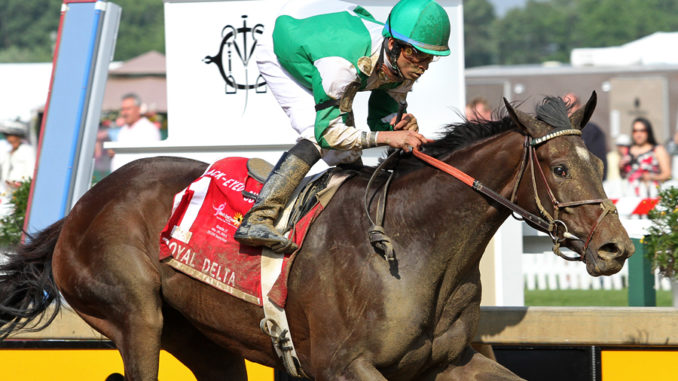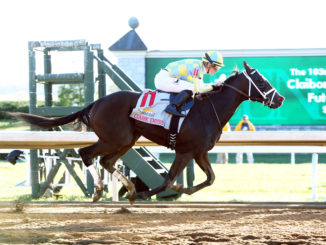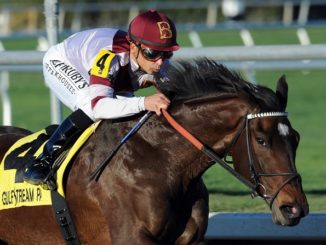
They say first impressions shouldn’t necessarily be the last. In the case of Royal Delta, they were, for me, literally true in two respects.
When news of her death in Ireland this week due to foaling complications came out Friday morning, the first thing to come to mind was how fortunate I was to have witnessed her first stakes win. On a glorious spring afternoon in Baltimore, and perched high on Pimlico’s press box balcony, I got as good a view as any of Royal Delta’s commanding 2 1/2-length triumph in the 2011 Black Eyed-Susan (G2). Awarded a lofty 107 Brisnet Speed rating for that performance, hers was the most lasting impression I took away from that Preakness weekend.
Coming two weeks after the Kentucky Oaks (G1), the Black-Eyed Susan is generally treated as a consolation prize or a complete afterthought. Royal Delta’s own Oaks aspirations had been derailed after a poor season debut in the $75,000 Suncoast at Tampa Bay Downs, and when she arrived at Pimlico there were only four others there to face her.
For a race whose history is often not fully appreciated, the Black-Eyed Susan has a feather in its cap with Royal Delta on its honor roll of winners. She was the first divisional champion to have won the race since Silverbulletday in 1999, and arguably its most important winner since the days of Twilight Tear and Gallorette (1944-45).
Unfortunately, the Black-Eyed Susan proved to be the only time I ever saw Royal Delta race in person. However, that overwhelmingly positive first impression was proved true again and again.
Royal Delta later won the Alabama (G1) and then clinched the three-year-old title over It’s Tricky and Kentucky Oaks winner Plum Pretty in the Breeders’ Cup Distaff (G1), inanely named the Ladies Classic at the time. She was champion older female the next two years, thus joining Cicada, Susan’s Girl, Azeri, and Zenyatta as the only females to win division titles in three separate seasons. In 2016, Beholder trumped them all becoming the first to win in four different seasons.
Royal Delta helped bring another historically significant race for females, the Delaware Handicap, back to the top. A game winner by a head in the 2012 renewal, her presence helped put that race over the hump in the eyes of the American Graded Stakes Committee, which elevated it back to Grade 1 status in 2013. Royal Delta won that one more emphatically by 10 3/4 lengths.
As brilliant as Royal Delta was at times, she was also prone to losing by significant margins on occasion. I’ve felt this tended to occur most often in races that were treated more as stepping stones — the 2011 Coaching Club American Oaks (G1) and Beldame (G1), and 2013 Fleur de Lis H. (G2) come immediately to mind — than primary goals. One race that never seemed to fit her, though, was the Dubai World Cup (G1), which she contested twice when Meydan was still using a synthetic track. Notwithstanding an allowance win over the Keeneland Polytrack at three, that kind of surface was not her cup of tea.
In the wake of her firm defeat by Princess of Sylmar in the 2013 Beldame, I was surprised Royal Delta started as the 7-5 favorite in her three-peat attempt in the Breeders’ Cup Distaff at Santa Anita. She did indeed prove over the top, finishing a distant fourth to the aforementioned Beholder, and was retired.
Royal Delta had difficulties reproducing, and the Galileo filly born this week will sadly be her only issue. Also disappointing is that she will no longer be around when her time comes to be inducted in the Hall of Fame.
A queen has been taken too soon.



